
Are You 18 Or Over?
YesOr
No By clicking yes, you certify that you are over 18. By using this website, you agree to our legal disclaimer.605+ Cannabis Strains over 20 Breeders worldwide.
Table of Contents
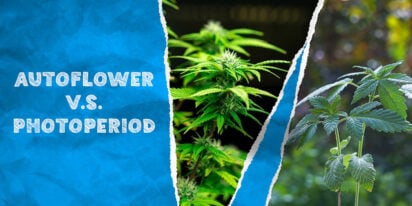
In the ever-evolving landscape of cannabis cultivation, the debate rages on about the nuanced disparities between Autoflower vs Photoperiod seeds. Seasoned experts delve into harvest times, yields, effects, and growth ease, dissecting the dichotomy between these seed types. This comprehensive article will delve deeper into these aspects, providing you with the most up-to-date insights.
Our journey began in the early 1940s when a wild hemp strain, known as “Ruderalis,” was stumbled upon in Russia. Ruderalis paved the way for autoflowering cannabis strains, setting them apart from their “photoperiod” counterparts, necessitating specific solar signals to commence flowering, relying on meticulously timed light schedules. In stark contrast, Ruderalis plants commence flowering at the tender age of 3-4 weeks, irrespective of environmental cues, offering the prospect of harvesting buds within a few months from seed. Ruderalis, although petite with low THC content, possessed a short life cycle that suited Russia’s brief summers and lengthy winters.
An astute breeder recognized the potential of Ruderalis’ autoflowering trait and short growing period and thus began crossbreeding Ruderalis with photoperiod strains. This marriage of genetics led to the birth of autoflowering strains, initially coined as “Lowryders.” These strains have now increased, yielding buds that rival the potency of other cannabis strains through generations of careful breeding.
Autoflowering cannabis strains set themselves apart by their independence from specific light schedules to initiate flowering. Photoperiod strains, in contrast, mandate a minimum of 12 hours of uninterrupted darkness to trigger flowering. Outdoor cultivators must time their plantings to align with spring and the impending winter.
Indoor growers can exert control over the light schedule by employing timers, creating ideal conditions for flowering. Autoflowering plants, however, embark on their flowering journey within weeks, irrespective of the light regimen. This flexibility grants outdoor auto growers the advantage of planting at the optimal time or aligning their cultivation with the local time zone, relying solely on 2-3 months of sunny weather.
Autoflowering cannabis plants possess a shorter growth cycle, hastening the harvest time compared to their photoperiod counterparts. Following germination, autoflowering plants transition swiftly into bud production, typically within 2-3 months. Unlike photoperiod plants, autos continue growing vertically until they shift their focus entirely to developing dense, hefty buds. It’s worth noting that some auto strains may exceed the recommended harvest time, enhancing yields and potency with an additional week or two.
Photoperiod strains, on the other hand, demand patience, requiring 3-4+ months from seed to harvest, with variances based on cultivation methods and strain selection. These plants, characterized by their extended vegetative stage, are unsuited for expedited harvests.
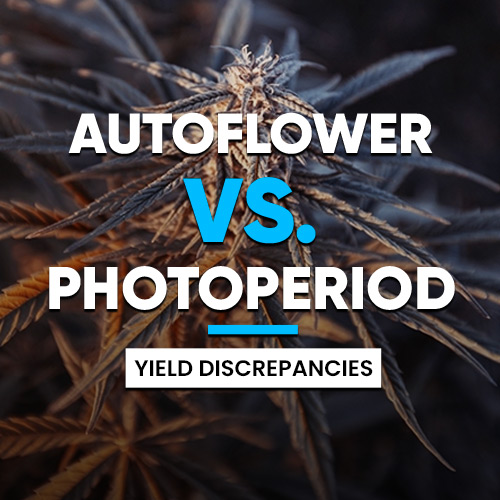
The yield potential of autoflowering plants hinges on various factors, including cultivation setup, genetics, and grower experience. Typically, autos can yield up to 4 ounces per plant under optimal care, but this can fluctuate. Exceptional lighting is pivotal for maximizing yields, and seasoned growers have achieved as much as 6 ounces per plant in ideal conditions. The short life cycle of autos facilitates multiple annual harvests, augmenting overall yield potential.
Photoperiod strains respond favorably to growth techniques such as pruning, training, and topping, enabling growers to boost yields substantially. By benefitting from environmental control, indoor cultivators can fine-tune conditions for maximum yield. Conversely, outdoor photoperiod growers with ample space and optimal conditions can cultivate larger plants, yielding bountiful harvests. Ultimately, the yield of photoperiod strains hinges on genetics, cultivation techniques, environmental factors, and grower expertise.
Although autoflowering strains offer fewer options, their potency mirrors that of photoperiod cannabis plants. While auto strains tend to feature elevated CBD levels due to Ruderalis’ influence, contemporary auto strains have been meticulously bred to emulate photoperiod counterparts, exemplified by strains like “Blue Cheese.” Autoflowering strains also boast comparable aroma and flavor profiles, with the main visual distinction being their additional foliage among the buds. This characteristic may necessitate extra care during trimming but can also expedite bud growth in lower light conditions.
Autoflowering strains operate on an internal timer, commencing flowering approximately 3-4 weeks post-germination. Depending on the specific strain, this timeline remains impervious to grower intervention, with flowering lasting 2-3 months from seed. Unlike photoperiod strains, autoflowering plants do not demand a specific light schedule to instigate flowering. They can thrive with as little as 12 or 8 hours of daily light, although increased light levels correlate with larger yields.
This internal clock imparts a unique advantage to autoflowering strains, enabling cultivation in well-illuminated urban settings where photoperiod plants may struggle. Additionally, they are ideal for warm climates, permitting cultivation beyond the standard growing season, with harvests as early as July. In contrast, photoperiod plants typically culminate in harvest during mid to late fall.
Autoflowering strains offer relative simplicity in cultivation but come with their own set of challenges. They are particularly vulnerable during their early growth stages, as they will commence flowering irrespective of their health status. Stunted growth early on can lead to reduced yields. While auto strains are resilient and will follow their internal schedule, growers must address any issues swiftly to secure a successful harvest.
Photoperiod strains afford more control over the growth cycle, with the vegetative stage offering room for recovery and intervention before transitioning to the flowering phase. This grants growers an opportunity to rectify any problems before the critical flowering stage begins. For novice growers, photoperiod strains may be a preferable choice, as they tolerate various growing challenges during the vegetative stage.
In summation, both autoflowering and photoperiod strains have their merits, catering to different cultivator preferences and skill levels. The choice ultimately hinges on factors such as available space, desired yield, and cultivation experience. The cannabis cultivation landscape continues to evolve, offering a diverse array of options to suit every grower’s needs.
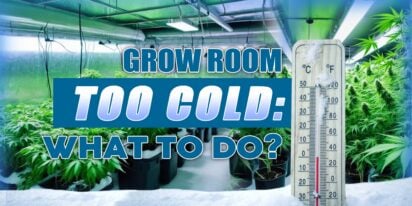
[ez-toc] In indoor gardening, maintaining an optimal temperature within your grow tent is crucial for the health and productivity of your plant

[ez-toc] Welcome to the delightful world of cannafudge crafting, where sweetness meets sophistication, and cannabis infusion adds a unique twis
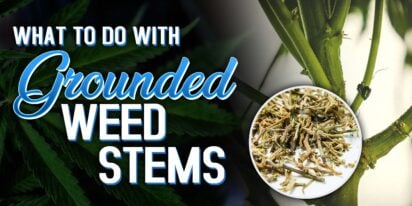
[ez-toc] You’ve finished trimming your weed, but what about those leftover stems? Don’t throw them away! These seemingly useless bits can a

Feeling high can be an exhilarating experience, but it's essential to make the most of it by engaging in activities that enhance the sensation a
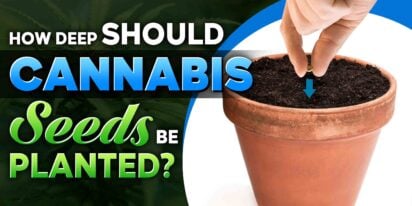
[ez-toc] Starting with planting cannabis seeds might seem simple, but how deep should cannabis seeds be planted for them to grow well. In this
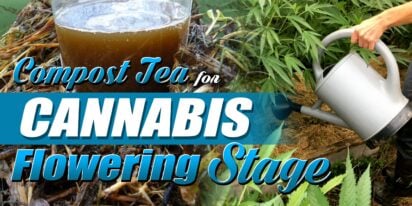
[ez-toc] In the realm of cultivating cannabis, maximizing growth during the flowering stage is a top priority for growers. While various method
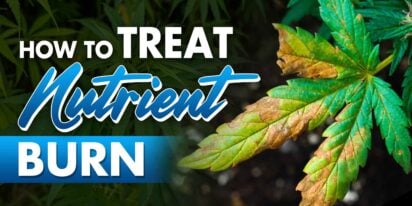
[ez-toc] Nutrient burn is a common issue among plant enthusiasts, often resulting from over-fertilization or improper nutrient application. It

[ez-toc] Welcome to our complete guide to dealing with harmful pathogenic mold in cannabis. For those who grow cannabis, preventing mold is vit

In recent years, there has been speculation about “did Shakespeare smoke weed?” This idea originates from a study by South African anthropol
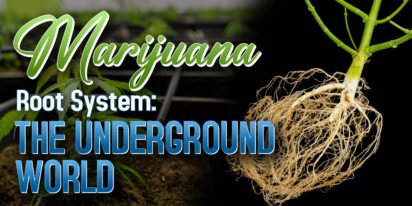
[ez-toc] Welcome to the hidden world beneath the soil – the inside of the marijuana root system. While the vibrant leaves and resinous flower

Are You 18 Or Over?
YesOr
No By clicking yes, you certify that you are over 18. By using this website, you agree to our legal disclaimer.